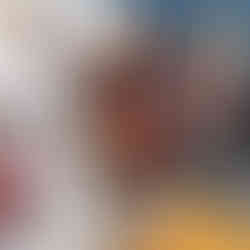You Ask...We Answer: No.1
- captains32
- Feb 28, 2024
- 3 min read
Welcome to a new series on the Mary Day Blog!
In this series questions FROM YOU as well as questions asked FOR YOU, will be answered to provide everyone;
a peek behind the scenes of running a windjammer business,
to what sailing on a windjammer is like,
to the nuts and bolts of schooner life,
to show what sailing on the Maine coast is truly like;
and so much more!
The topics are endless (well ok, almost endless), so we encourage you to ask away!
Send us your questions by emailing info@MaryDay.com, or post a comment below.
(No worries - rest assured that your privacy is important to us.)
Don’t be shy – we’ll do our best to give you the straight and narrow answers.
To kick off this series, grab a cup of joe and pull up a deck chair, as we thank Dan D. of Coffee on The Porch https://www.coffeeontheporchme.com/ (the supplier of that wicked good "Captain's Crank" coffee on Mary Day) for recently checking in and asking...
"What is a windlass and why are you replacing the one on Mary Day?"
THE MAKING OF A NEW WINDLASS FOR MARY DAY- phase one.
A windlass is a mechanical device located on the foredeck of Mary Day that is used for hauling up the anchors as well as raising the sails if needed.
As with anything wooden, being out in the weather takes its toll, and as any mariner knows "prior planning prevents poor performance". The time was right to replace Mary Day’s windlass drum before it became a necessity.
“What is the windlass made from?”
The windlass is a blend of solid red oak wood as the base of the drum, fitted with cast iron gears that are mechanized by a hydraulic motor.
To replace the drum, we were lucky to have found a wood-turning business in Saco, Maine that had the right equipment to handle the size of the wood needed. It took time to glue red oak planks together and to shape the solid red oak box into the horizontal drum, weighing approx. 400+ lbs. The initial 18” was roughed out by a tool that rides on a track very slowly working its way down the blank. Going from 18” square to 18” round took the better part of a day. The tapered ends were machined by hand, using a small wood lathe just like the ones often found in
your home woodworking shop. The tapering process took a fine steady hand of a skilled carpenter, and we were fortunate enough to have found the right resources close to home.
The original cast iron gears were patterned and fabricated at the Lunenburg Foundry in Nova Scotia. Since then, we have been able to use those patterns to update the gears made by the Etheridge Foundry in Portland, Maine. The gears will be reinstalled on the wooden drum and all the mechanics hooked back up.
“How long does it take to make the windlass?”
It’s a winter project for certain! As it took time to find the right craftsman with the shop space, skills, and equipment, the windlass started to take shape in January. By early February, the basic, bare-boned drum shape was delivered to the Mary Day shop where Barry set to work on the final stages of the construction for the drum to accept the metal work fittings. Pinning the 2” machined shafts in the ends was recently completed for the warping heads to attach to the drum. The warping heads allow us to set the main or haul the yawl boat if need be. With a little bit of varnish, she was ready to head to her new home!
“How did you ever get the new windlass to the schooner?”
Thankfully it snowed the night before delivery! The new windlass was delivered to the schooner by sled, being pulled down the dock and lifted onto the Mary Day. As of late February, it is now in her final resting place, on the foredeck of Mary Day waiting for the gear work to be installed and mechanics engaged.
Take a peek at the following video that captures Phase One of
MAKING A WINDLASS FOR MARY DAY
Stay tuned over the next few months for Phase Two…the final installation and running of the windlass.
Many thanks to Dan for kick-starting our series!










Why not metal instead of wood ??
Digi Glume's service logo design delivered a logo that perfectly represents my brand. It’s creative, professional, and exactly what I was looking for. Their design team truly understands how to capture a brand’s essence.
Did you pass the challenge in Quick Draw?
Love these pods, but print is so small it's hard for me to read. Also not bright enough.......Del Webster